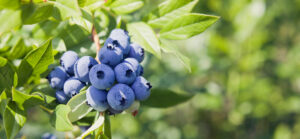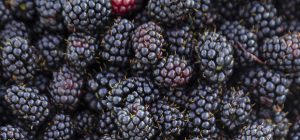An exciting, fresh new delivery of soft fruit bushes has arrived! In stock are the some of the most popular and much-loved varieties, including blackberries, blueberries, raspberries, gooseberries, red, white and blackcurrants and more unusual varieties of grapes, fig, boysenberry, loganberry and kiwi.
If you haven’t grown soft fruits before, don’t be daunted! They are surprisingly easy to grow and care for and can bring an abundance of delicious fruits for relatively minimal effort. Savouring fruits you have grown yourself brings a great sense of satisfaction and well-being too.
Soft fruit bushes will grow in most garden soils that are free draining and can be planted either bare root into the ground or into containers or pots, so contrary to what you might think, you don’t need a large garden.
The addition of fruit bushes can add interest and variety to your garden borders or patio’s and attract wildlife through their abundant mix of flowers, fruits and foliage. Plant a variety of types and you will have something to pick and enjoy throughout the growing season. You can also freeze most berries and currants to enjoy later in the year.
HINTS & TIPS FOR SOFT FRUITS SUCCESS!

When to Plant: Best between October and early spring. However, container growing soft fruits can be planted at any time of year.
Where to Plant: Happiest positioned in open sunny spots – near a wall or fence helps too, where they can shelter from cold winds. They hate being water-logged, so look for a free-draining area in your borders.
How to Plant:
For containers, ensure to

Soil consideration: Will grow in most soil types, but ideally rich and well-draining is best. If you have clay soil, dig in lots of organic matter. Create a good soil mixture by using half garden soil with half general-purpose compost.
Watering: Water thoroughly once a week in dry weather, especially during the first year. In later years water during prolonged dry spells. Don’t let containers dry out, keep moist at all times.


Feeding: In spring, top up with mulch, such as compost, laying it at least 5cm thick and away from the canes or stems of the plants, to avoid them rotting. In containers, the plant uses up all the nutrients quicker, so liquid feed every 1-2 weeks during the main growing season May-August.
Pruning: Prune every year in later winter/early spring. The general rule is to prune out the dead and diseased. With most fruit bushes, prune all the shoots right back to encourage new growth. With mature bushes, prune out about a third each year. Regular pruning keeps fruit yields high.
Support & Safety: Some bushes need support – such as wires or canes. Have these in position prior to planting out. Keep fruits safe from birds, who also love the fruit when it appears with a fruit cage or netting over containers.
Check plant labels for individual care needs. For more help and advice, speak to our experts in-store







